|
|
2. Arc de Triomphe du Carrousel
Directly in the courtyard of the Louvre is the Arc de Triomphe du Carrousel that was commissioned by Napoleon to commemorate his military victories (along with the “other” Arc de Triomphe on the Champs Elysées).
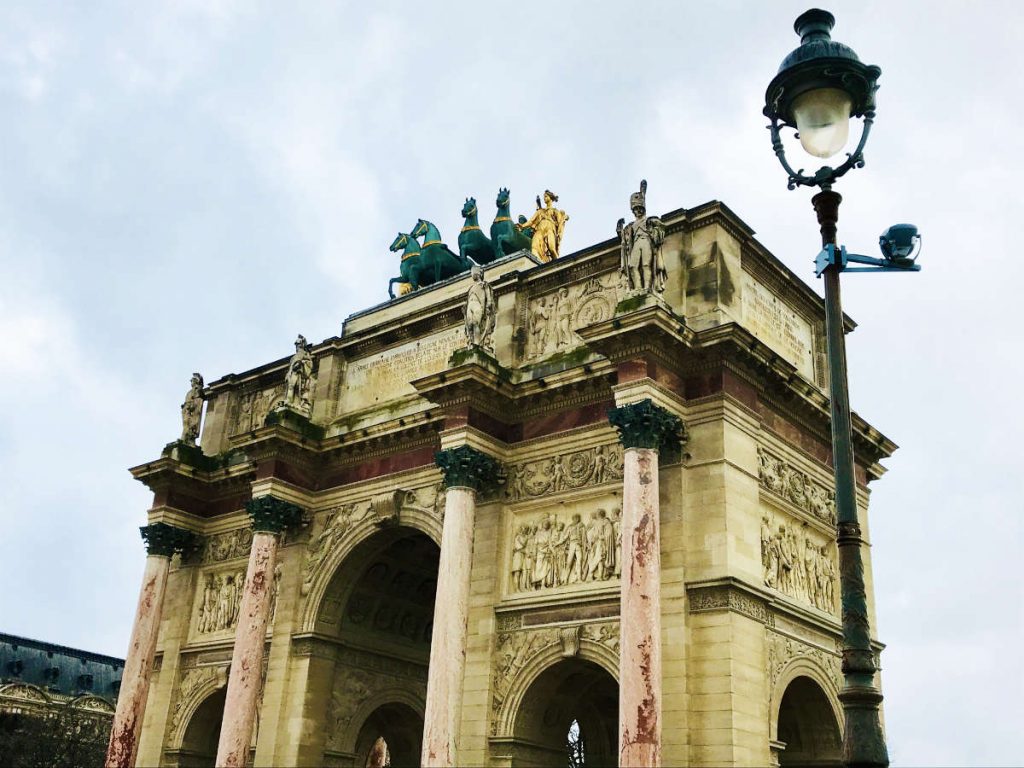
Initially, on top of the Arc de Triomphe du Carrousel were placed the Horses of Saint Mark. They had adorned the Basilica of San Marco in Venice since the sack of Constantinople in 1204 and had been brought to Paris where they were placed atop Napoleon’s Arc de Triomphe du Carrousel.
After Napoleon Bonaparte’s defeat at the Battle of Waterloo, many of the countries he had previously conquered asked for their artwork back. The Horses of Saint Mark were returned to Italy and today there is a copy on top instead.
https://snippetsofparis.com/axe-historique-of-paris/ |
|
|
|
|

 
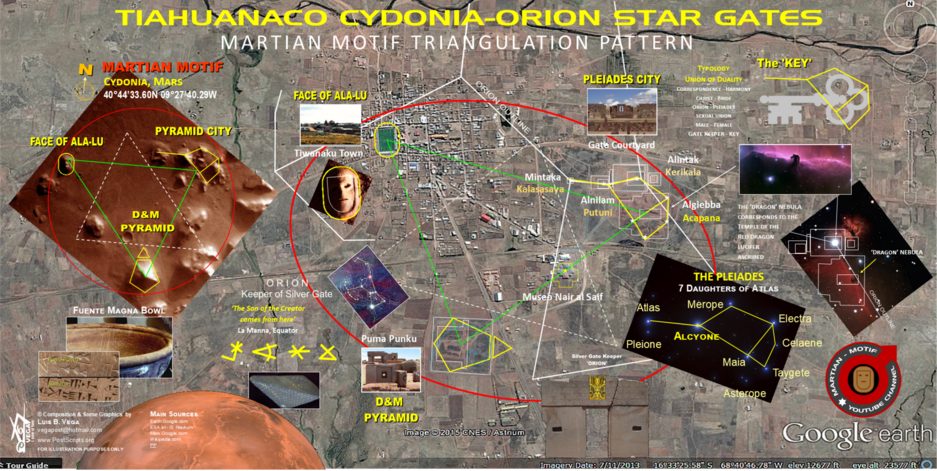  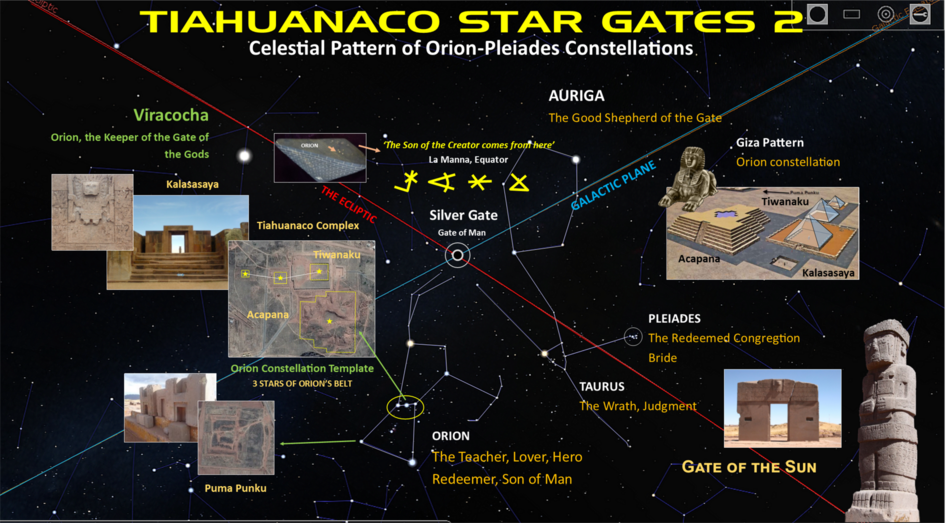 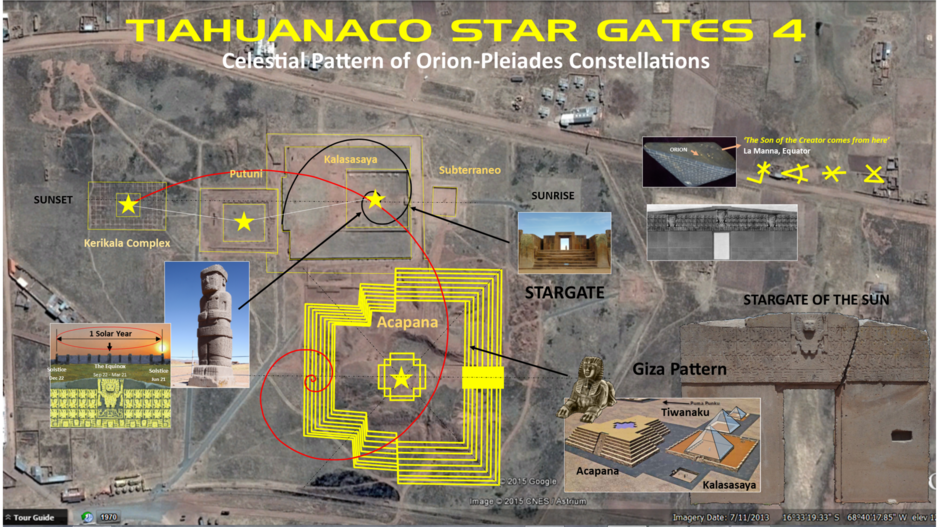 
 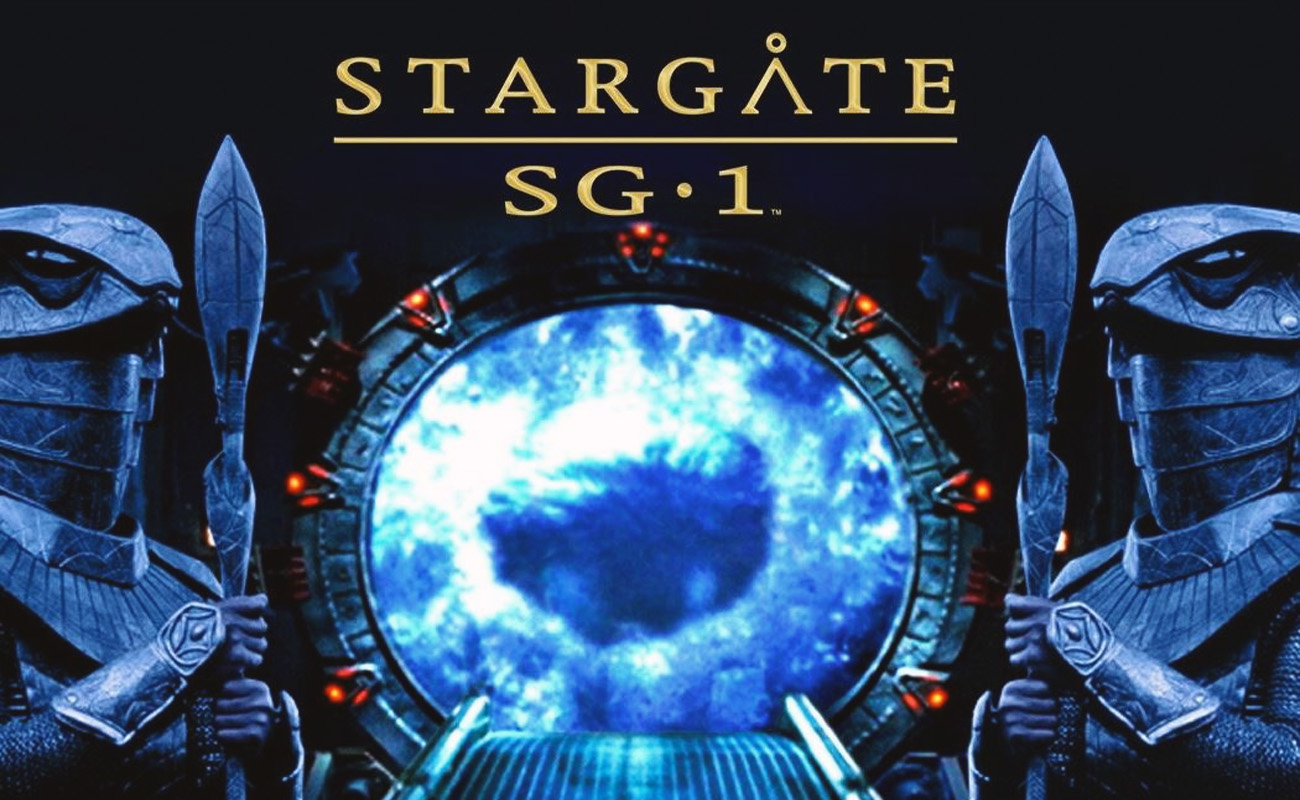 ![Stargate Special Edition [Reino Unido] [DVD]: Amazon.es: Kurt Russell: Películas y TV](https://m.media-amazon.com/images/I/51Gr2lgt03L.jpg)
LA SANGRE DEL CORDERO EN EL DINTEL, EN CONTEXTO AL EXODO PASCUAL, ES UN TIPO DEL GRIAL
1. Éxodo 12:7: Y tomarán de la sangre, y la pondrán en los dos postes y en el DINTEL de las casas en que lo han de comer.
2. Éxodo 12:22: Y tomad un manojo de hisopo, y mojadlo en la sangre que estará en un lebrillo, y untad el DINTEL y los dos postes con la sangre que estará en el lebrillo; y ninguno de vosotros salga de las puertas de su casa hasta la mañana.
3. Éxodo 12:23: Porque Jehová pasará hiriendo a los egipcios; y cuando vea la sangre en el DINTEL y en los dos postes, pasará Jehová aquella puerta, y no dejará entrar al heridor en vuestras casas para herir.
Dintel
De Wikipedia, la enciclopedia libre

Esquema de estructura adintelada.
Un dintel es un elemento estructural horizontal que salva un espacio libre entre dos apoyos. Es el elemento superior que permite abrir huecos en los muros para conformar puertas, ventanas o pórticos. Por extensión, el tipo de arquitectura, o construcción, que utiliza el uso de dinteles para cubrir los espacios en los edificios se llama arquitectura adintelada, o construcción adintelada. La que utiliza arcos o bóvedas se denomina arquitectura abovedada.
Los mejores exponentes de arquitectura adintelada en piedra son los edificios monumentales del Antiguo Egipto y la Grecia clásica. La palabra dintel proviene de la palabra latina: limitellus, que deriva etimológicamente de limen y limes. En latín la palabra limen significa umbral, puerta, entrada o comienzo, y limes se refiere a un sendero entre dos campos, límite o muralla.
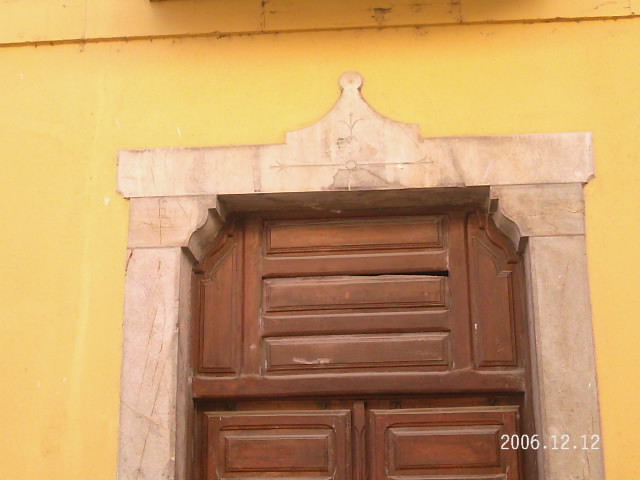
Comparen las dos figuras anteriores y noten que la LUZ SOLAR PENETRA, en este caso EN LA PUERTA DE TIWANAKU (BOLIVIA) en los equinoccios, osea el 20/21 de marzo y los 21/22 de septiembre. CONCRETAMENTE LA FIESTA DE LOS TABERNACULOS ES PRIMA HERMANA DE LA FIESTA PASCUAL. EN ESTE MARCO, INSISTO, EL SOL, SI USTED COMPARA CON LA FIGURA SUPERIOR, EN LOS MISMOS EQUINOCCIOS LA LUZ SOLAR CHOCA CON LA PIRAMIDE VATICANA E INCLUSO INGRESA O PENETRA ADENTRO DEL TEMPLO DE SAN PEDRO. PREGUNTO: ¿SI LA PLAZA DE MARIA DE LA VICTORIA ESTA UBICADA EN LA MISMA LINEA EQUINOCCIAL, QUIEN ES EN ESTE MARCO LA MISMA, EN EL CONTEXTO QUE LA PASCUA TAMBIEN TIENE ESA REFERENCIA? CUALQUIER PERSONA QUE TIENE TRES DEDOS DE FRENTE SE DA CUENTA QUE ES MARIA LA MAGDALENA. SI NO ES ASI PREGUNTO:
¿PORQUE CRISTO SE PRESENTO SIENDO VENCEDOR EL 17 DE NISSAN, OSEA EN EL EQUINOCCIO FRENTE A MARIA MAGDALENA?
CONCLUYO:
MARIA LA VICTORIA ES MARIA MAGDALENA

|
|
|
|
|
|
|
|
Discover it with a self guided tour app
The Champ de Mars is a large public green space in Paris, France, located in the seventh district between the Eiffel Tower and the École Militaire. The park is named after the Roman Campus Martius ("Field of Mars"), a tribute to the Roman god of war. The name refers to the fact that the lawns here were previously used by the French military as drilling and marching grounds.
Champ de Mars was originally part of a large flat area called Grenelle, which was intended for market gardening. Citizens would apply for small plots of land and use them to grow fruit, vegetables and flowers for the local market. However, the Grenelle Plain was not a very fertile place to farm.
The construction of the École Militaire in 1765, designed by Ange-Jacques Gabriel, was the first step towards the Champ de Mars in its current form. Areas of military exercises were originally planned in the area south of the school, in the current location of Fontenoy. The choice to build an esplanade north of the school led to the noble façade that surrounds the Champ de Mars today. The planners leveled the ground, surrounded it by a large ditch and a long cobblestone boulevard, and as a final touch, the esplanade was enclosed by a fine lattice garden.
On August 27, 1783, Jacques Charles and the Robert brothers launched the world's first hydrogen-filled balloon from Champ-de-Mars.
This place witnessed the spectacle and beauty of the festivals best remembered by the French Revolution. On July 14, 1790, the first celebration of Federation Day (fête de la Fédération) was held on the Champ de Mars, now known as Bastille Day, exactly one year after his incarceration. The following year, on 17 July 1791, the Champ de Mars was massacred. Jean Sylvain Bailly, the first mayor of Paris, fell victim to his own revolution and was guillotinated there on November 12, 1793.
The Champion of the Supreme Being was also held on June 8, 1794 in Champ de Mars. According to the design of the painter Jacques-Louis David, a massive "National Altar" was built on top of the artificial hill, which was crossed. at the tree of freedom. The festival is considered to be the most successful of this type of revolution. For a hundred days, the restored Napoleon Champ de Mai held a ceremony during which he vowed to follow the 1815 Charter on Champ de Mars.
In 2012, the exhibition was held at the United Buddy Bears Champ de Mars, an international art exhibition featuring individual countries from more than 140 two-meter bears. They promote peace, love, tolerance and international understanding and are displayed throughout the planet. They stand in front of the Eiffel Tower on the Champ de Mars in Paris.
Champ de Mars was used as the scene in James Bond's 1985 film A View to a Kill, where Bond (last played by Roger Moore) drove a Renault 11 taxi he had hijacked at the Eiffel Tower.
Champ de Mars is the venue for beach volleyball at the 2024 Summer Olympics and five at the 2024 Summer Paralympics.
https://en.wikipedia.org/wiki/Champ_de_Mars
https://navicup.com/object/france-grand-tour/champ-de-mars-234982/gb
|
|
|
|
|
ISLA SAN GIORGIO (VENECIA)=GEORGE LEMAITRE
|
|
|
|
|
Lion of Amphipolis
From Wikipedia, the free encyclopedia
 The Lion of Amphipolis  Lion of Amphipolis location
The Lion of Amphipolis (Greek: Λέων της Αμφίπολης) is a 4th-century BC tomb sculpture near Amphipolis, Macedonia, northern Greece. According to Oscar Broneer and archaeologist Dimitris Lazaridis, the first person excavating in the area in the 1960s, it was set up in honour of Laomedon of Mytilene, an important general of Alexander the Great, king of Macedon.
It is now located about 1 km outside the south gate of the ancient city.
The discovery of the monument is connected to the modern history of Greek Macedonia, as the first parts of it were found initially by Greek soldiers during the First Balkan War in 1912–13 when they drained the Strymonas river bed (where the stone from the Lion’s plinth had been used in a dam in or after the Roman period) to build the modern bridge.[1] They were followed by British soldiers a few years later in 1916, during World War I, who also discovered significant parts of the monument while building fortifications at the bridge. The British tried to steal (evidence required) the pieces, but a Bulgarian attack prevented their plans.
In the early 1930s, during works for draining part of Lake Kerkini nearby, there was a discovery of an ancient bridge and close to it in the river mud further, very large pieces of the marble lion. In 1937, and thanks to Lincoln MacVeagh, the US ambassador in Greece at the time, there was a private initiative along with support and funds from the Greek government to restore the Lion of Amphipolis, which eventually came to be in its current form. The whole process has been documented thoroughly by Oscar Broneer in his book The Lion of Amphipolis published in 1941.
Although in seated position, the lion is larger and bulkier than the one erected at Chaeronea and has a height of more than 4 m in its main body. Taking into account the base, it is taller than 8 m. The head has a width of 2 m. Its craftsmanship shows a work of the 5th or first half of 4th century BC. As to when it was erected, there is no agreement between experts as there is no mention of it in ancient sources.
|
|
|
|
|
Tellingly the LHC suns are aligned with the (original/#1) Earth's equinoctial axis.

So the context is right and the stage is set…
Are our 3 Suns a perfect replica of Orion's Belt, and through which the Giza pyramids? One way to find out:

They, are, in fact, identical!
The LHC is… an "Orion Stargate".
Apollo
Mankind set foot on the Moon for the first time on July 20th, 1969 as NASA's Apollo 11 mission successfully landed in the Sea of Tranquility, allowing the first astronaut Neil Armstrong to take his "one small step for (a) man, giant leap for mankind".

The Moon has been shown to be a major component of the LHC secret design and here it is confirmed further by the fact that the Apollo program also intelligently interacts with the LHC…
- The Apollo Earth-Moon connection echoes the LHC-SPS relationship (= Earth-Moon ratio)
- CERN/LHC is partially situated in the French town Saint-Genus-Pouilly; the name "Pouilly" apparently comes from the Latin "Appolliacum"; in Roman times there was a temple dedicated to Apollo in the area (link 1, link 2)
- "Apollo" is also said to mean "to destroy" or "the destroyer" (= Apollyon) and right at CERN/LHC infamously stands a statue of Shiva, a Hindu deity known as "the Destroyer"
Now let's take a look at the Apollo program insignia…
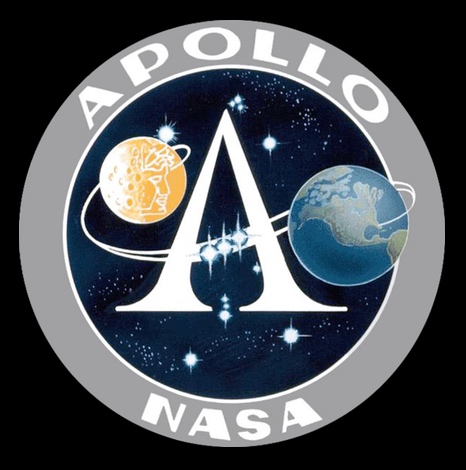
- The Orion constellation is centrally depicted in the middle of the insignia, resonating with the LHC "Orion stargate" code
- Orion represents Osiris the god of the underworld; the name "Apollo" is associated with a "bottomless pit" (underworld) via Apollyon/Abaddon in the Book of Revelation 9:11
Revelation 9:11 And they had a king over them, which is the angel of the bottomless pit, whose name in the Hebrew tongue is Abaddon, but in the Greek tongue hath his name Apollyon.
After finding this many correlations, our next logical step is to check for any visual overlay interaction between the Apollo program insignia, which is circular, and the LHC/solar system/Orion Belt Stars diagram we've been working with.
For starters, here is a straightforward overlay arrangement:

Not much happening… except the Moon and the SPS actually appear identical in size. We can check this by putting the two together…

As you can see, they are the exact same size. The SPS representing the Moon matching the size of the Moon… making perfect sense.
But why did we have to move the Apollo insignia for this? It's curious and seems a bit clumsy because the rearrangement didn't result in any other additional alignments. We need to investigate this a little further…
Keeping the Moon snugly inside the SPS, let us now rotate the insignia 180 degrees, i.e. we turn it upside down, like this:
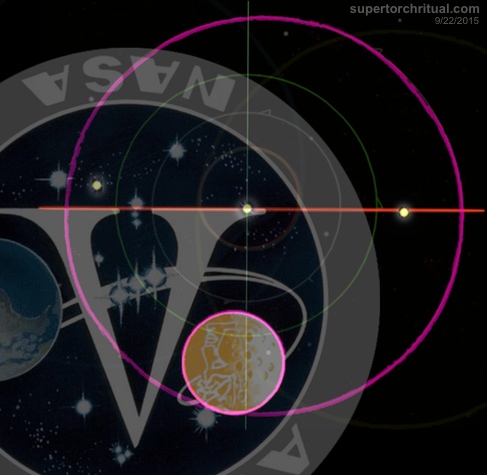
There it is, an unmistakable alignment! The flat feet of the big letter "A" now rest precisely on the solar system's equinoctial axis (red)!
At this point we have little reason to doubt we are dealing with a real hidden design here and not some happy coincidence. The following further confirms the reality of what we are uncovering…
Apollo 11 had its own insignia…

Let's bring together the two insignias (they are sized so that the inner edges of the circles match perfectly):
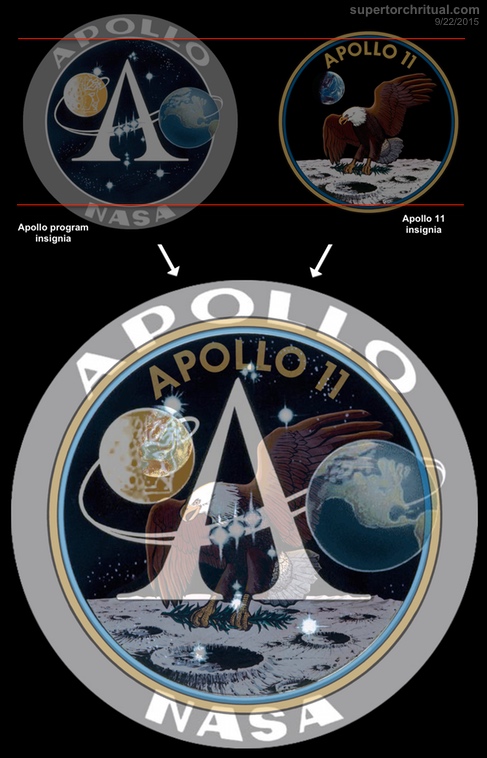
It's unmistakable: The same letter "A" stands tall like a pyramid right on the surface of the Moon!
The "pyramid" allusion here is no accident either.
There is this…
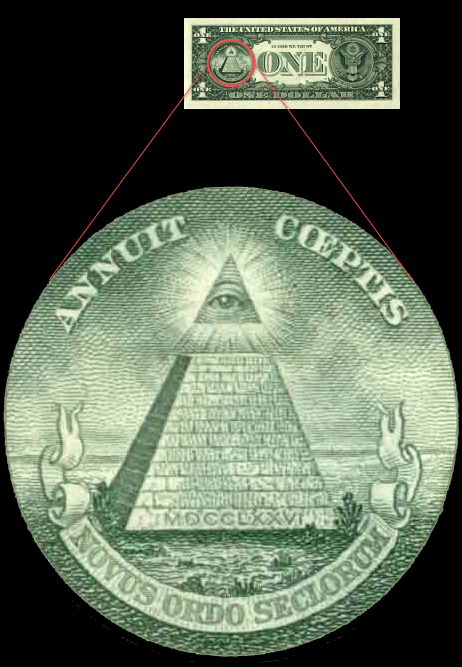
 
And there is also the Orion Correlation Theory: The Apollo insignia displays Orion and the Correlation Theory identifies Orion with the pyramids.

The Orion Correlation Theory emerged in the 1990s. The Apollo program was active back in the 1960s…
Somebody knew back then.
Both the Apollo program and CERN's LHC were enormous undertakings carried out by mankind to boldly go where no man has gone before. And we now see that they mysteriously interact with each other, whispering "Orion Stargate".
In Closing
So there you have it. I am confident I have provided enough compelling evidence to establish that CERN's Large Hadron Collider has a secret side that appears to be fully celestial in nature, ultimately pointing its ethereal finger to the Moon and Orion, as well as Mars.
Is the LHC a "Gate of the God", a "Tower of Babel", symbolically or literally connecting "heaven and earth"? Is it an "Orion Stargate" blueprint that can, if sufficiently decode, help us become a more inter-dimensional civilization?
And just who is behind the LHC secret design?
I don't have all the answers. It's all still very mysterious. The new revelations in this article, however, should serve as a major breakthrough paving the way for further investigation that will leads us to more stunning discoveries and more concrete answers to the big questions.
As always, if you are intrigued and would like to keep up with the latest, cutting-edge multicontextual discoveries (remember, a lot of the findings in this article are from my investigation all the way back in 2008-2010), consider joining STRUG (Super Torch Ritual Underground, our subscriber section), where information moves faster than the speed of light. Please also help us out by spreading the word. (If this article is met with silence, I might stop posting major public/free/Etemenanki articles.)
https://www.supertorchritual.com/underground/articles/CERN_Orion_Stargate.html |
|
|
|
|
La Madeleine

Foto: joz
Para ser una iglesia, la Madeleine tiene sin duda una forma extraña, pues parece más bien un templo de la antigua Roma. La explicación hay que buscarla en la turbulenta historia de París en los años que rodean a la Revolución Francesa.
Historia del monumento

La antigua Madeleine
Antes de que esta zona de la ciudad quedara completamente alterada con la construcción de la enorme Plaza de la Concordia, existía en este lugar una pequeña iglesia de la Madeleine. Pero el diseño de la nueva plaza exigía una iglesia más grande, cerrando la perspectiva de la "Calle Real", que conducía hasta ella.
Cuando estalló la Revolución Francesa, la iglesia se encontraba todavía a medio construir, e inmediatamente se detuvieron las obras.
Pasado el periodo revolucionario, Napoleón quiso convertir la iglesia inacabada en un templo pagano, dedicado a la gloria del Gran Ejército, la Grande Armée. Para ello, derribó todo lo construido hasta entonces, y comenzó a levantarse el edificio que hoy contemplamos.
Pero finalmente, viendo que su efímero Imperio se derrumbaba, decidió que el edificio, ya muy avanzado, volviera a su uso original como iglesia.
Exterior del monumento
La Madeleine tiene la forma de un templo "periptero", es decir, rodeado de columnas por sus cuatro costados, como los templos griegos. Y posee las mismas dimensiones que el mayor templo de la antigua Grecia: el de Zeus Olímpico de Atenas.
Los elementos más destacados en el exterior de La Madeleine son:
1. El frontón
Fue construido después de la Restauración borbónica, en tiempos de Luis Felipe de Orleans, el "rey ciudadano". Aunque Luis Felipe había sido partidario de la Revolución, quiso que la imagen de este gran frontón tuviera un espíritu de conciliación. Por eso permitió que apareciera en él María Magdalena arrodillada ante Jesucristo Juez, como una alegoría de la Francia arrepentida, que suplica perdón por la ejecución de Luis XVI.
En efecto, a pocos pasos de esta iglesia, en la Plaza de la Concordia, había tenido lugar, el 21 de enero de 1792, la muerte del rey en la guillotina.
2. Puertas de bronce
Las puertas de entrada al templo son uno de los elementos más impresionantes de esta iglesia, por sus colosales dimensiones y por la fuerza de sus relieves.
Fueron realizadas por el barón Henri de Triqueti y representan "Los diez mandamientos". Los dos primeros se encuentran en el panel horizontal de la parte superior, y los otros 8 en las hojas de las puertas.
Estos son los mandamientos, y las escenas que los representan. Todas ellas están tomadas del Antiguo Testamento y tienen gran fuerza expresiva.
- "No tendrás otros dioses fuera de mí". Escena que lo ilustra: el pueblo judío recibe las tablas de la Ley.
- "No invocarás en vano el nombre de Dios". El pueblo judío ante Moisés.
- "Santificarás las fiestas". Dios descansa el séptimo día.
- "Honra a tu padre y a tu madre". Noé maldice al hizo que se burló de él.
- "No matarás". Caín es castigado por la muerte de su hermano.
- "No cometerás adulterio". El profeta Natán recrimina al rey David.
- "No robarás". Josué dictando sentencia por un robo.
- "No levantarás falso testimonio". Daniel defiende a la casta Susana ante la acusación injusta.
- "No codiciarás la mujer de tu prójimo". Dios rescata a Sara, la mujer de Abraham.
- "No codiciarás la casa de tu prójimo". Elías recrimina al rey Acab por codiciar la viña de Nabot, y darle muerte.

Detalle del 5º mandamiento. Abel yace en tierra tras ser asesinado por Caín. Foto: joz
Visita al interior
Si el exterior de La Madeleine parece un templo pagano de la Antigüedad, el interior se organiza como unas termas, con gran profusión de mármoles de colores.
Su mayor defecto es la escasa luz natural, que deja a la iglesia habitualmente en semipenumbra.
El techo se cierra mediante bóvedas rebajadas, adornadas con casetones y con un gran óculo en el centro, inspiradas en el Panteón de Roma.

Foto: Guilhem Vellut (recorte)
La iglesia está llena de esculturas realizadas por artistas que fueron los mejores en su momento. El gobierno de Luis Felipe de Orleans puso gran cuidado la decoración de esta iglesia, que debía ser "El Remplo de la Reconciliación nacional", tras las convulsiones de la Revolución Francesa y del Imperio. Por eso destinó a La Madeleine grandes cantidades de recursos.
Las piezas más vistosas son:
- El gran grupo escultórico sobre el altar principal, obra de Charles Marochetti. Se llama "El arrebato de María Magdalena", a la que muestra en éxtasis, en el momento de ser arrebatada al cielo, transportada en una canastilla por ángeles de enormes alas.
-
El enorme fresco de Jules-Claude Ziegler, en el casquete del ábside. En él aparecen representados personajes de la Iglesia, de todas las épocas y culturas. La escena central representa a Cristo, que acoge y perdona a María Magdalena (alegoría de Francia arrepentida, como en el relieve del frontón).
Una banda a los pies de la santa explica el motivo: dilexit multum, amó mucho.
En el fresco aparece también la figura de Napoleón Bonaparte, que en ese momento acababa de fallecer y era extraordinariamente popular en Francia. Clica en la imagen para verlo.
LINKS ÚTILES
https://www.guiapracticaparis.com/la-madeleine.php |
|
|
|
|
|
|
|

April 5-6, 2009
Italy (L'Aquila) earthquake near Rome (~300 dead)
 
'Gotta Be Somebody' crossing over into reality
Time mirroring via Venus (Amor/Roma)
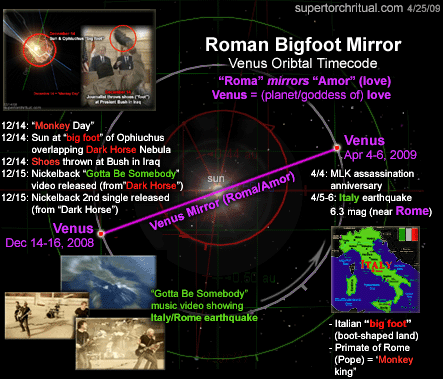
|
|
|
 Primer Primer
 Anterior
29 a 43 de 43
Siguiente Anterior
29 a 43 de 43
Siguiente
 Último
Último

|

